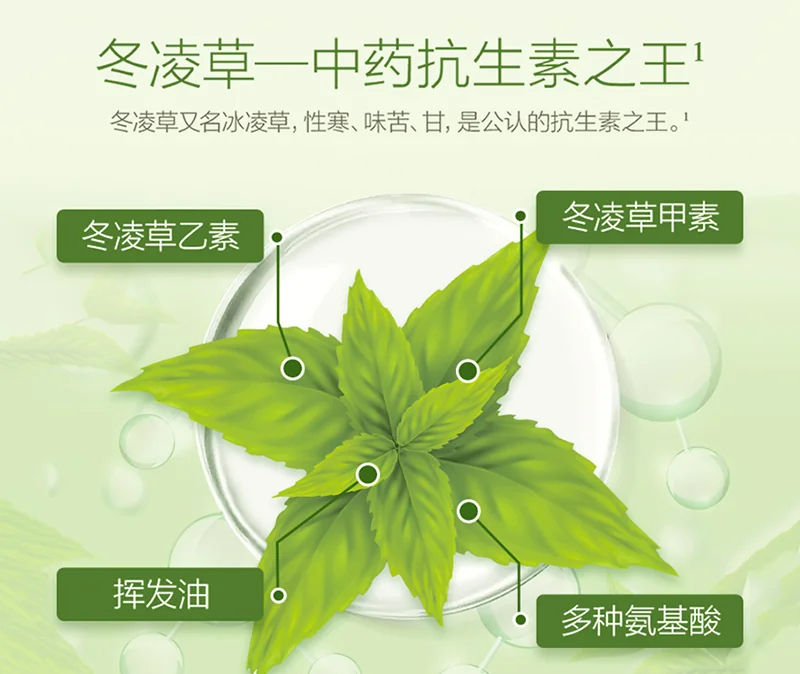Dong Ling Cao: The TCM Herb for Soothing Throat and Detoxification
- Hongji Medical

- Jun 11
- 4 min read
Dong Ling Cao, also known as Rabdosia rubescens or Ice Crystal Grass, is the dried aerial part of a plant in the mint family, valued in Traditional Chinese Medicine (TCM) for its ability to clear heat, detoxify, and relieve throat pain. Known by names like Snow Flower or June Snow, it has a long history of use, particularly in folk remedies, despite limited mention in ancient TCM classics.
While not explicitly recorded in texts like the Shennong Bencao Jing or Compendium of Materia Medica, Dong Ling Cao appears in regional herbal records such as the Henan Chinese Herbal Handbook and Shaanxi Chinese Herbal Medicine.
These sources describe its role in treating sore throats, tonsillitis, and mouth ulcers. Folk traditions have long used it as a tea or topical remedy, and modern research has brought it into the formal TCM system, as documented in works like the Chinese Materia Medica.

Properties of Dong Ling Cao
Nature and Channels
Taste: Bitter, slightly sweet
Nature: Cold
Channels: Lung, Stomach
Main Benefits
Clears heat and detoxifies
Soothes throat and relieves pain
Supports anti-tumor effects
Dosage
Internal use: 15–30 grams, boiled in decoctions.
External use: Applied as needed or formulated into lozenges, tablets, or granules.
Growing Regions
Primarily found in northern China, including Henan, Shaanxi, Shanxi, and Hebei, harvested in summer or autumn.
Identification
Shape: Irregular segments or fragments; stems are square with longitudinal grooves, swollen at nodes, greenish-brown or brownish.
Leaves: Opposite, often wrinkled, egg-shaped or lance-like with serrated edges when intact.
Scent and Taste: Mild scent, bitter taste.
Preparation
Typically used raw or processed into tablets, capsules, granules, or lozenges for convenience.
Clinical Uses of Dong Ling Cao
Dong Ling Cao is used in TCM to treat various conditions:
Sore Throat: Relieves red, swollen, painful throat with difficulty swallowing, often with fever or cough.
Tonsillitis: Eases swollen, pus-filled tonsils with high fever and throat pain.
Mouth Ulcers: Reduces painful sores in the oral mucosa that hinder eating.
Lung Heat Cough: Alleviates cough with thick, yellow phlegm, fever, and thirst.
Toxic Sores: Treats red, swollen, painful skin sores caused by heat toxins.
Cancers: Used as an adjunct therapy for esophageal, stomach, or liver cancer, potentially inhibiting tumor growth.
Specific Benefits
Clearing Heat and Detoxifying: Contains oridonin, which has anti-inflammatory and antibacterial properties, reducing inflammation and toxins.
Soothing Throat and Relieving Pain: Eases throat discomfort and swallowing issues.
Anti-Tumor Support: May suppress tumor cell growth, aiding cancer treatment.
Dong Ling Cao in TCM Formulas
Dong Ling Cao is often combined with other herbs in TCM formulas to enhance its effects. Here are some examples:
Dong Ling Cao Gargle: Combines Dong Ling Cao with Honeysuckle, Forsythia, and Licorice to clear heat and soothe throat pain, used for sore throat and mouth ulcers.
Dong Ling Cao Tablets: Includes Dong Ling Cao with Scrophularia, Ophiopogon, Platycodon, and Licorice to nourish yin and clear throat heat, treating chronic pharyngitis.
Xiao Zhong San Jie Fang (Swelling-Dispersing Formula): Pairs Dong Ling Cao with Prunella, Oyster Shell, Fritillaria, Scrophularia, and Licorice to reduce swelling, used for swollen lymph nodes.
Anti-Tumor Formula: Combines Dong Ling Cao with Ban Zhi Lian, Bai Hua She She Cao, and Cremastra for adjunct cancer therapy, targeting esophageal, stomach, or liver cancer.
Comparison with Similar Herbs
Dong Ling Cao shares properties with other TCM herbs but has distinct strengths:
Honeysuckle (Jin Yin Hua): Clears heat and detoxifies, excelling in wind-heat colds with fever and sore throat.
Forsythia (Lian Qiao): Clears heat and detoxifies, ideal for wind-heat symptoms like fever and sore throat.
Dandelion (Pu Gong Ying): Clears heat, detoxifies, and reduces swelling, with added diuretic effects for infections.
Dong Ling Cao is particularly effective for throat pain and tonsillitis, while Honeysuckle and Forsythia focus on wind-heat, and Dandelion emphasizes urinary benefits.
Modern Applications and Research
Modern research highlights Dong Ling Cao’s benefits:
Anti-Tumor Effects: Oridonin and related compounds inhibit esophageal, stomach, and liver cancer cells, potentially by inducing cell death and blocking blood vessel growth.
Anti-Inflammatory: Reduces inflammation by suppressing mediators.
Antibacterial: Inhibits certain bacteria and fungi.
Immune Support: Enhances immune function, boosting resistance.
Clinically, Dong Ling Cao is used for pharyngitis, tonsillitis, mouth ulcers, and as an adjunct for cancer treatment, improving outcomes and reducing side effects. It also shows promise for chronic bronchitis and rheumatoid arthritis.
How to Use Dong Ling Cao Safely
Precautions
Spleen and Stomach Deficiency with Cold: Avoid use, as its cold nature may worsen loose stools or digestive issues.
Pregnant Women: Use cautiously, as safety data is limited.
Usage Tips
Dong Ling Cao can be brewed as tea or used in processed forms like tablets or lozenges. Consult a TCM practitioner for proper dosage and suitability.
Conclusion
Dong Ling Cao is a valuable TCM herb known for clearing heat, detoxifying, and soothing throat pain. It effectively treats sore throats, tonsillitis, mouth ulcers, and supports cancer therapy, with modern research confirming its anti-tumor, anti-inflammatory, and immune-boosting properties. As studies advance, Dong Ling Cao’s role in healthcare may expand. To ensure safe and effective use, consult a TCM practitioner for guidance on dosage and preparation.




